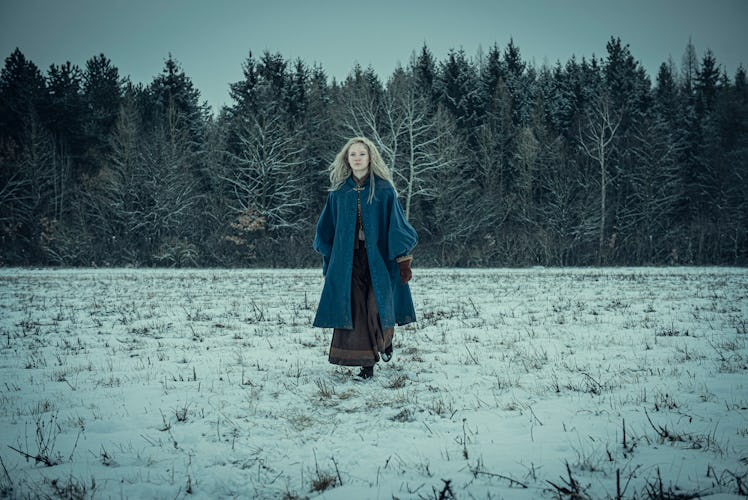
This Theory About Ciri's Prophecy In 'The Witcher' Has Fans Asking Questions
The Witcher Season 1 follows three separate characters on their journeys through the Continent. The title character is Geralt of Rivia, the "Witcher" of the story, whose life viewers see over 90-odd years. There's also the love of his life, Yennefer, whose story we follow from childhood to the defeat of Nilfgaard. But despite her lack of central screen time, the third character, Ciri, the "Lion Cub of Cintra," may be the most critical of all. This theory about Ciri’s prophecy in The Witcher indicates the series has a larger tale to tell.
The Witcher spends most of the first season with Geralt and Yennefer. From a world-building point of view, this makes sense. Their stories span nearly a century, and both travel widely in their adventures, which gives viewers an overview of the shifting political climates and social norms of the Continent.
Ciri, on the other hand, barely goes anywhere. As a sheltered princess, her escape from her home in Cintra during the defeat by Nilfgaard is on foot. Despite stealing a horse at one point, she never travels more than a few miles. All of her adventures also happen over a couple of weeks. The earliest viewers see her is a day or two before Cintra's fall, and her final scene is the day after the Battle of Sodden Hill, which occurs 14 days later. And yet, Ciri seems to be the show's heart.
Season 1 of The Witcher goes heavy on the idea of "destiny." Several scenes, from the "law of surprises" at Queen Calanthe's party to the season finale, suggest the fates of Ciri and Geralt are tied together somehow. The most crucial moment comes when viewers discover Ciri's ability to prophesize the future, which she does at the end of the series' penultimate episode.
Ciri's adventures take place after the fall of Cintra, and the longer she travels, the more dangerous the roads get. In the early days, those who are displaced are moving in large makeshift villages. But by the final episodes, those have been broken up, and the desperate have formed gangs, attacking those who look vulnerable or are traveling alone. Ciri, in her expensive cloak, alone with her stolen horse, is an easy target for a crew of young men formerly from Cintra.
For a moment, Ciri thinks she's been saved. She even recognizes Anton, one of those she used to hang out with in the market square pretending to be commoner before the city burned. But that's precisely why they targeted her. They knew she was a poor little rich girl, alone.
But in this moment of crisis, she is suddenly overtaken by a trance. Here's what she says while under the spell:
Verily, I say unto you the era of the sword and the ax is nigh, the era of the Wolf's Blizzard. The Time of the White Chill and the White Light is nigh, the Time of Madness and the Time of Contempt.
The good news is the men back away in terror. But what do her words mean?
In the books, this prophecy is central to the overarching plot. The version from the books begins the same way. But then it goes on to say:
Tedd Deireádh, the Time of End. The world will die amidst frost and be reborn with the new sun. It will be reborn of Elder Blood, of Hen Ichaer, of the seed that has been sown. A seed which will not sprout but burst into flame.
Those lines are left off in the show, perhaps to be spoken at a later time. But in the novels, they are a warning that the Continent, and everyone on it, will be threatened by a "global cooling." In other words, "Winter Is Coming."
If this theory about The Witcher's prophecy is correct, it suggests the series is more like Game of Thrones than fans might realize. Could this be a story of political machinations, and rulers fiddling while the world dies? If so, The Witcher's future just got way more complicated.
This article was originally published on